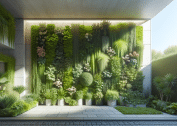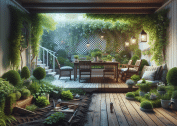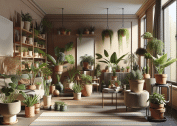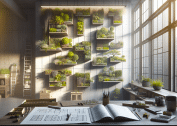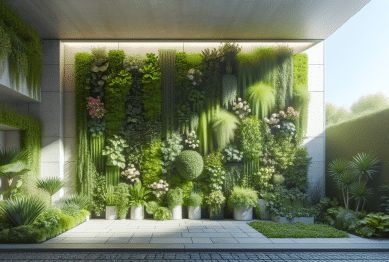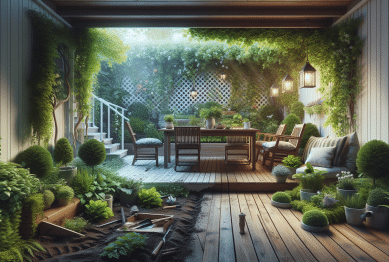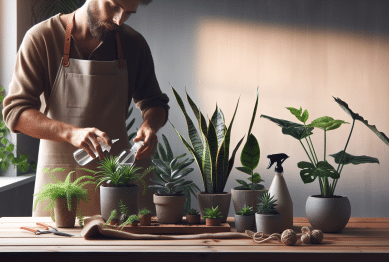In 2025, outdoor spaces are evolving from simple backyard extensions into serene retreats that support wellness, relaxation, and a deeper connection with nature. Homeowners increasingly prioritize mental well-being and sustainability, resulting in outdoor areas designed to refresh the mind, body, and spirit. Transforming outdoor areas into relaxing spots is no longer just about aesthetics—it’s about creating multifunctional, mindful environments that enhance quality of life.
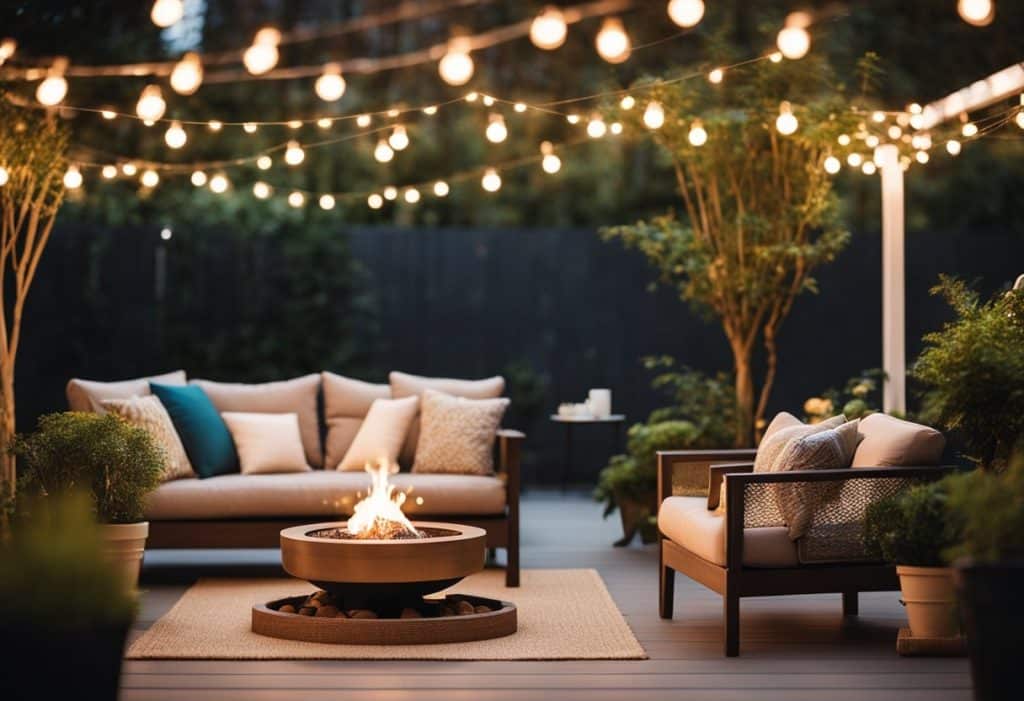
The Rise of Wellness-Centric Outdoor Spaces
Spa-Dens: Combining Gardens with Relaxation
One major trend is the creation of “spa-dens,” outdoor areas that blend spa-like features with natural surroundings. Replacing traditional fire pits with fountains or small water features offers a smoke-free, calming alternative. Flowing water promotes relaxation through gentle soundscapes, and strategically planted greenery attracts birds and pollinators, adding natural charm. Spa-dens can also include shaded lounging areas and comfortable seating, providing a space to unwind at any time of day.
Digital Detox Retreats
With technology dominating daily life, many homeowners are designing spaces specifically for digital detox. These retreats prioritize disconnection from screens and immersion in nature. Key elements include quiet zones away from the house, shaded hammocks or daybeds, and outdoor meditation areas. A successful digital detox space encourages relaxation, reflection, and time spent outdoors, making it an essential aspect of modern home design.
Sound Healing and Biophilic Design
Sound healing and biophilic design are emerging as innovative ways to create tranquility. Outdoor spaces increasingly feature natural materials such as stone, wood, and bamboo, combined with gentle sound elements like chimes, water streams, or outdoor speakers playing calming sounds. Biophilic design strengthens the connection between humans and nature, boosting mood and mental well-being. These spaces support mindfulness and stress reduction while creating an aesthetically pleasing environment.
Sustainable and Eco-Friendly Landscaping
Native Plant Gardens
Sustainability is a key factor in modern landscaping. Gardens focusing on native plants help conserve water, support local wildlife, and reduce maintenance needs. Native plant gardens require less fertilizer and fewer pesticides, making them environmentally responsible. Additionally, they attract pollinators such as bees and butterflies, creating a dynamic and lively outdoor space that feels both natural and balanced.
Earth-Toned Color Palettes
Outdoor design trends are shifting toward warm, earthy color palettes in furniture, planters, and decor. Shades of terracotta, olive, and muted browns create a calming and inviting atmosphere that harmonizes with surrounding greenery. Earth-toned palettes encourage relaxation and give outdoor spaces a grounded, natural feel, blending seamlessly with nature.
Sustainable Materials
Eco-conscious materials are increasingly standard in outdoor spaces. Furniture made from recycled plastics, sustainably sourced wood, or weather-resistant natural fibers offers durability while minimizing environmental impact. Outdoor rugs, cushions, and decking materials are now being chosen not just for style but for sustainability, longevity, and low maintenance. These decisions make outdoor areas both functional and responsible.
Multifunctional Outdoor Living Spaces
Outdoor Kitchens and Dining Areas
Outdoor kitchens and dining areas are now more popular than ever. Homeowners are incorporating grills, countertops, sinks, and seating to allow for seamless indoor-outdoor entertaining. These areas make alfresco dining a convenient and attractive option, while also providing opportunities for family gatherings or casual socializing. Proper lighting, shade structures, and weather-resistant furnishings enhance usability year-round.
Meditation and Yoga Zones
Many backyard designs now include dedicated zones for yoga or meditation. These spaces are usually minimalist, incorporating natural elements such as wooden decks, stone pathways, or bamboo screens. A serene, uncluttered environment allows residents to practice mindfulness and improve mental clarity. Meditation and yoga zones are versatile—they can serve as quiet retreats or host small wellness-focused gatherings.
Outdoor Entertainment Systems
Outdoor theaters, surround-sound systems, and game areas are transforming backyards into dynamic social spaces. Movie nights under the stars, casual gaming, or live music sessions are now accessible in one’s own backyard. These entertainment setups enhance versatility without compromising the area’s relaxing qualities. Soundproofing techniques and thoughtful layout design ensure that entertainment areas coexist peacefully with wellness spaces.
Personalization and Unique Design Elements
Bespoke Outdoor Furniture
Homeowners are increasingly opting for bespoke outdoor furniture that reflects personal style. Custom-made pieces allow flexibility in size, shape, and material, ensuring that the outdoor space matches specific lifestyle needs. Whether it’s a unique sectional, handcrafted bench, or personalized daybed, bespoke furniture elevates comfort while creating a distinctive look.
Avant-Garden Aesthetics
Avant-Garden design pushes the boundaries of traditional landscaping. This trend incorporates sculptural shapes, minimalist color schemes, and high-tech features into outdoor spaces. Combining innovation with natural elements produces a futuristic yet harmonious environment. Avant-Gardens can include geometric planter arrangements, modern pergolas, or integrated lighting systems that add visual interest without sacrificing serenity.
Treehouses and Elevated Retreats
Treehouses are reemerging as a popular way to integrate architecture with nature. Elevated retreats provide unique perspectives and create private areas that are both fun and tranquil. Using sustainable construction materials, treehouses can blend seamlessly with the natural surroundings while offering spaces for reading, meditation, or quiet observation of wildlife.
Integrating Plants, Texture, and Lighting
The combination of greenery, textures, and lighting can transform a backyard from functional to restorative. Consider layering plants of varying heights and textures to create visual interest and privacy. Soft lighting—such as string lights, lanterns, or solar-powered LEDs—enhances evening ambiance. Adding tactile elements like wooden decks, stone paths, and woven fabrics gives the space depth and invites exploration.
Conclusion
Transforming outdoor areas into relaxing spots in 2025 reflects a broader cultural shift toward wellness, sustainability, and personalization. From spa-dens and meditation zones to sustainable gardens and bespoke furniture, homeowners now have an array of tools to create meaningful, functional, and calming outdoor environments. Thoughtful planning, combined with eco-conscious materials and mindful design, ensures that every backyard can become a true retreat—supporting mental health, fostering connection with nature, and enhancing overall quality of life.
References
- Garden Design. (2025, January 27). 2025 Trends in Garden Design. Available at: https://www.gardendesign.com (Accessed: 18 August 2025).
- This Old House. (2025, May 15). Outdoor Living Trends 2025. Available at: https://www.thisoldhouse.com (Accessed: 18 August 2025).
- DecorMatters. (2025, May 13). 12 Outdoor Living Space Trends Taking Over 2025. Available at: https://decormatters.com (Accessed: 18 August 2025).


